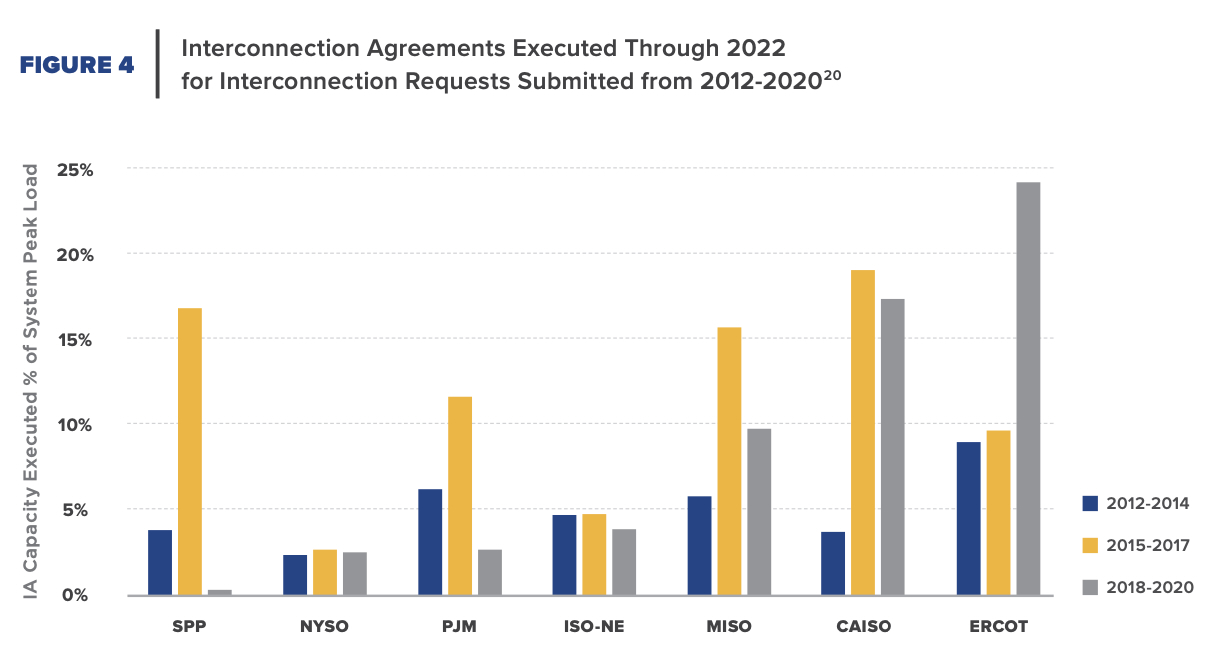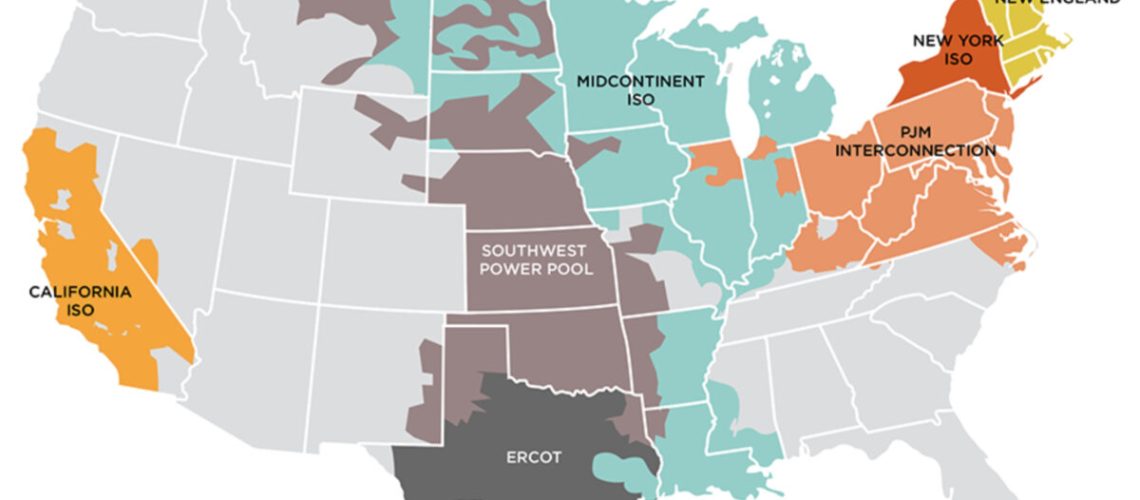Grid operators in California and Texas received grades of B for their processes to enable interconnection of new generators, primarily renewables and storage, while others received low Cs to a low D, in a scorecard report prepared by the consultancies Grid Strategies and The Brattle Group.
Project developers are awaiting interconnection studies to identify the transmission facility upgrades needed for their respective projects, so they may sign interconnection agreements for construction of the upgrades.
“As is widely recognized, and this scorecard confirms, the progress towards completing those interconnections is slow and puts system reliability at risk,” says the report, published by the trade group Advanced Energy United, which backs carbon-free electricity.
Grades were based on a survey of interconnection customers and analysis of the recent results of each grid operator’s interconnection process.
The ERCOT grid operator in Texas has a “relatively fast and consistent interconnection process, with reasonable costs,” says the report, while noting “challenges” to transmission network upgrade construction that can “slow the process towards the end and result in curtailment of projects that do get built.”
ERCOT uses a “connect and manage” approach to generator interconnection, which a former Cypress Creek Renewables executive has reasoned could also be used in the rest of the U.S.
Executives from Clearway Energy Group and Enel North America have called for combining the connect-and-manage approach with comprehensive regional transmission planning to efficiently interconnect large-scale renewables and storage.
California’s grid operator CAISO “also had a relatively fast and consistent process” for projects submitted before 2020, but since then, CAISO’s process has been “unable to efficiently process applications” due to the large increase in the number of new generator interconnection applications, the report says.
ERCOT and CAISO completed interconnection agreements for more capacity of new generators by the end of 2022 for applications submitted in 2018-2022 than the other five grid regions, as shown in the nearby graph. The graph provides an apples-to-apples comparison because it shows the interconnection agreement capacity executed in each region as a percentage of system peak load.

Most of the grid operators “are undergoing significant efforts” to reform their interconnection practices and policies, the report says, “in response to stakeholder concerns and Federal Energy Regulatory Commission Order 2023.”
While the report used generator interconnection process results as the primary scoring factor, the grades were also based on five other factors:
- Pre-queue information
- Interconnection process design
- Assumptions, criteria and replicability
- Availability of interconnection alternatives
- Use of regional transmission planning.
The report, titled Generator Interconnection Scorecard, is the first-ever attempt to evaluate the grid operators, and may be repeated in future years to assess their progress, the authors said.



